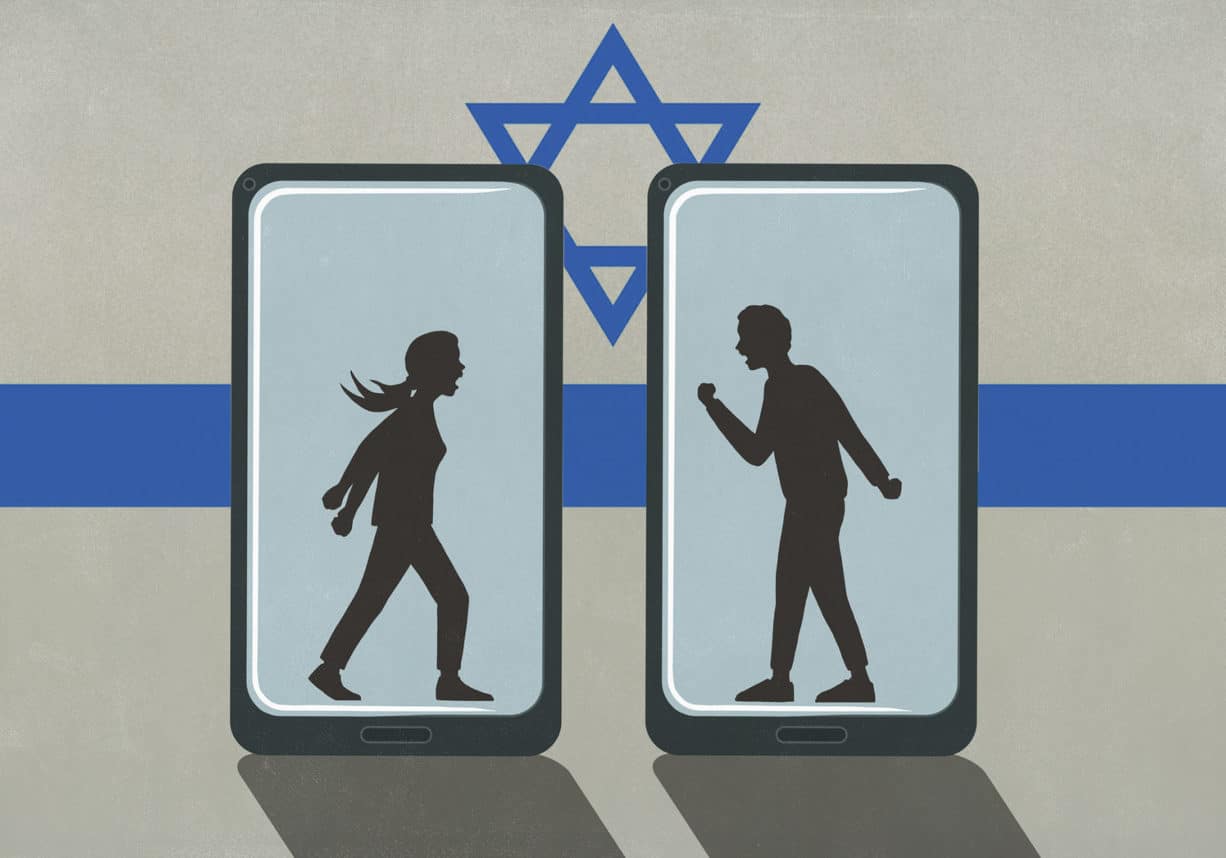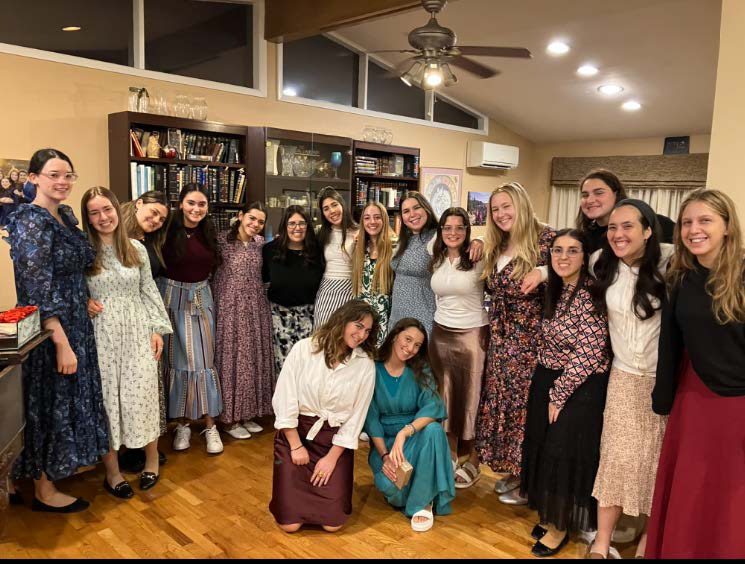
The Magerman Edition of the new Koren Tanakh is a project that stretched over more than a decade, and makes the study of Tanakh easier – and more pleasurable — than ever before.
The five chumashim (Books of Moses) were translated by the late Rabbi Lord Jonathan Sacks. There were ten additional translators, and the translations were reviewed by eighteen scholars.
Sixty pages of reference materials at the end include textual variants, genealogy charts, maps depicting wars, tribal division of the Land, and borders of the Land of Israel, artists’ renderings and blueprints of the Temples, archaeological artifacts and more.
In his preface, publisher Matthew Miller, writes that “To undertake a new English translation of the Tanakh…requires chutzpah and humility, in equal measure, but neither more than yir’at Shamayim, fear and trembling before God.” That’s a good way to summarize the challenges that the translators must have faced when trying to create something that would be equally beautiful and faithful to the meaning of the Hebrew.
Rabbi Sacks, in his forward, writes, “Language – and with it the ability to remember a distant past and conceptualize a distant future – lies at the heart of our uniqueness as the image of God. Just as God makes the natural world by words, so we make the human world by words…”
He translates the opening verse of the Torah: “When God began creating heaven and earth, the earth was void and desolate, there was darkness on the face of the deep, and the spirit of God moved over the waters.” This lyrical, poetic style is manifest throughout.
The erudite Rabbi Dr. Tzvi Hersh Weinreb is the “consultancy scholar for translation queries and final decisions.” Seven additional scholars provided footnotes. The editor-in-chief is Rabbi Reuven Ziegler and almost forty more names are noted as editors, typesetters, and graphic designers.
Rabbi Weinreb, who also translated Jeremiah and Proverbs, told the Journal over email, “Every translator submitted his/her first draft to two scholars for review and critique. One was a known Bible scholar with an academic perspective. In my case, one of these scholars was Dr. Adele Berlin, a widely known translator in her own right and a prolific author…
“We worked with fear and trembling, but it was a huge privilege and a real labor of love.”
– Jessica Sachs
“We also submitted our rough draft to scholars with literary backgrounds, whose job it was to critique and improve our grammar, language, syntax and clarity of expression. The end product is a beautiful, poetic where appropriate, sophisticated English rendition of Tanakh.
“The process of translation and two distinct types of review was time consuming and thorough. Often the academic Bible scholar could not accept the literary scholar’s corrections and vice versa…As much as possible, we strived for consistency of translation unless that level of exact consistency was unrealistic and untrue to the meaning of the term in its different context.
“Common to all the translations is an emphasis on “pshat,” the simple literal meaning of the text. We avoided “drash,” and thus many with a traditional yeshiva education may, at first, find some of the translations unfamiliar to him/her. We kept explanatory footnotes to a bare minimum, although many of us kept notes of great length which will hopefully be published in later publications.
“At a later point in the process, I took on a consultant role, often charged with the determination of whether a literal translation had some support from traditional sources, and were not solely non-Jewish or purely the result of academic scholarship.
“For example, in working with Jessica Sacks as she edited her uncle’s translation, we often found that his translations were based upon the commentary of Rav Saadia Gaon, now available in Hebrew translation from the original Arabic. Or sometimes based on one of the many Targumim which are generally unknown to the public at large.
This was the case with ’Naftali ayala shluha, hanotein imrei shefer.’ [In Genesis 49:21.] I had chosen this sample verse, as a test case, to examine and compare. It means, according to the translation of Rabbi Sacks, ‘Naftali is a deer [‘ayala’] set free, bearing loveliest fawns.’ Regarding the phrase ‘imrei shefer’ – ‘bearing loveliest fawns,’ a sampling of other translations I consulted translated this differently: ‘…he giveth sayings of pleasantness’ (Silverman), ‘…who provides pleasant sayings” ‘Translation by Rabbi Joshua Schreier, in the Steinsaltz Humash), ‘…he giveth goodly words’ (Soncino, used also in the Stone Edition of the Torah).”
Rabbi Weinreb explained that almost all traditional commentators…interpret this phrase [“imrei shefer”] in non-literal or midrashic terms. But the ancient targumim, relatively available nowadays, translate it as does Rabbi Sacks….
“[T]his was a massive and, in many ways, groundbreaking project. I’m sure that the public will have comments, to which we will surely pay attention, and which, if valid, we will include in future printings.”
I also asked Jessica Sacks about her translation of iconic lines in Megillat Ruth, 1:16, which is usually translated, “…wherever you go, I will go…”
Ms. Sacks translated it: “…for wherever you walk, I shall walk…”
She renders “Walk” literally, while “go” can have a broader metaphorical meaning, like where one is going in life.
Ms. Sachs explained that “‘go’ has a broader meaning than ‘walk’ and that Ruth intends to convey that. The fact, however, that that phrase ‘Wherever you go,’ ‘Wherever I go’ is so well-trodden in English, in songs and in everyday speech, I felt flattened it somewhat, particularly in a time when we are used to having easy, virtual access to each other literally wherever we go. Because of this I did not feel that ‘Wherever you go, I go’ carried quite the weight of Ruth’s statement – these women’s journey was a long and deliberate journey, literally step-by-step. So I decided in the end to use the word that did not flow quite so smoothly in English, but would draw attention to the deliberate and weighty commitment Ruth was taking on…
She also translated Isaiah, Jonah, Song of Songs, Lamentations, Ecclesiastes and Esther. What was this translation experience like for her in general?
“For me, translating these books, particularly Isaiah, was something I’d dreamed of since I was first able to access the Hebrew poetry directly. The books of the Tanakh are not just sources of information and instruction – they are complex and colorful, often achingly beautiful, and the message is very much bound up with the form…
“We worked with a team of scholarly editors who not only gave of their tremendous knowledge and research, but also served as a counter-weight, pulling us back when we strayed too far from the literal…It wasn’t always an easy negotiation but I think that creative tension resulted in something unique.
“We worked with fear and trembling, but it was a huge privilege and a real labor of love.”
Publisher Matthew Miller, in his preface, thanks, among others, Debra and David Magerman, who were the chief supporters of this impressive work.
Toby Klein Greenwald is a graduate of the Tanakh and Oral Law departments of Jerusalem College for Women (the Michlala), a Tanakh teacher for many years, is the author or co-author of six biblical musicals for Raise Your Spirits Theatre, and an award-winning journalist, theater director, and editor-in-chief of WholeFamily.com.























 More news and opinions than at a Shabbat dinner, right in your inbox.
More news and opinions than at a Shabbat dinner, right in your inbox.